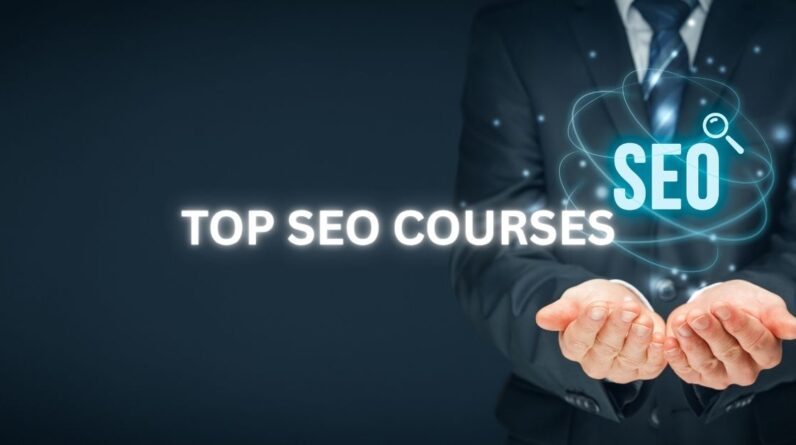
So, you’re an online retailer or maybe even a startup, and you want to take your business to the next level. Well, look no further because we’ve got the ultimate guide to SEO specifically tailored for online retailers like you. In this article, we’ll walk you through the ins and outs of Search Engine Optimization, giving you the tools and strategies you need to boost your visibility, drive more traffic to your website, and ultimately increase your sales. From keyword research to website optimization, we’ve got you covered. Let’s get started!
Importance of SEO for Online Retailers
Increase visibility and brand awareness
In the competitive online retail market, it is crucial for retailers to increase their visibility and brand awareness. By implementing effective SEO strategies, online retailers can ensure that their website appears higher in search engine results pages (SERPs), making it more likely for potential customers to discover their brand. When your brand is more visible, it not only increases the chances of attracting new customers but also helps in building trust and credibility.
Drive targeted traffic to your website
One of the main goals of SEO for online retailers is to drive targeted traffic to their website. With targeted traffic, you are able to attract visitors who are specifically interested in the products or services you offer. When you optimize your website for relevant keywords, you are more likely to attract high-quality traffic that has a higher chance of converting into customers. By driving targeted traffic, SEO helps online retailers maximize the return on their investment and increase the chances of making sales.
Boost organic search rankings
Organic search rankings play a vital role in the success of online retailers. When your website ranks higher in organic search results, it is more likely to be clicked on by potential customers. This not only helps in increasing visibility but also brings in more organic traffic. By implementing SEO strategies such as optimizing your website’s content, meta tags, and URLs, you can improve your organic search rankings and increase the chances of attracting relevant customers.
Gain a competitive edge
In the highly competitive online retail industry, gaining a competitive edge is crucial for success. By implementing effective SEO strategies, online retailers can stay ahead of their competitors and attract more customers. When your website appears higher in search engine rankings, it gives you an advantage over your competitors who may be ranking lower. Additionally, by optimizing your website’s content and user experience, you can provide a better overall experience to your customers, giving you an edge over competitors who may not have invested in SEO.
Increase conversions and sales
At the end of the day, the ultimate goal of online retailers is to increase conversions and sales. By implementing effective SEO strategies, online retailers can optimize their website and content to attract the right audience and increase the chances of conversion. When your website is properly optimized and ranks higher in search engine results, it instills trust and credibility in potential customers, making them more likely to make a purchase. By focusing on SEO, online retailers can drive more sales and achieve their business goals.
Understanding the Basics of SEO
On-page optimization
On-page optimization refers to the process of optimizing individual pages on your website to improve their visibility and organic search rankings. This includes optimizing meta tags, headings, URLs, and content for relevant keywords, as well as improving user experience factors such as page load speed and mobile-friendliness. On-page optimization plays a crucial role in ensuring that search engines can crawl and understand your website’s content, ultimately improving its visibility in search results.
Keyword research and targeting
Keyword research and targeting is an essential aspect of SEO for online retailers. It involves identifying and analyzing the keywords that your target audience is using to search for products or services similar to yours. By conducting thorough keyword research, you can uncover valuable insights and find the most relevant and high-potential keywords to target in your SEO strategy. Proper keyword targeting helps in maximizing your website’s visibility and attracting the right audience, for example, check out our Father’s Day Marketing Ideas post where we show you how to formulate the best converting campaign which of course, starts with keyword research.
Creating high-quality content
Creating high-quality content is essential for SEO success. It not only helps in attracting and engaging users but also signals to search engines that your website is valuable and relevant. High-quality content includes informative product descriptions, blog posts, guides, and other resources that provide value to your target audience. By creating content that aligns with user intent and incorporates relevant keywords, you can improve your website’s visibility and authority in search engine rankings.
Understanding user intent
Understanding user intent is key to creating an effective SEO strategy. User intent refers to the reason behind a user’s search query. By understanding the intent behind specific keywords, online retailers can create content that matches what users are looking for. For example, if a user is searching for “best running shoes,” they likely have the intent to find information or make a purchase. By optimizing your content to align with user intent, you can attract more relevant traffic and increase the chances of conversion.
Technical SEO considerations
Technical SEO focuses on optimizing the technical elements of your website to improve its visibility and performance in search engine rankings. It involves various factors such as website speed optimization, URL structure, site architecture, and structured data markup. By addressing technical SEO considerations, you can ensure that your website is easily crawlable by search engines and provides a seamless user experience. Technical SEO plays a crucial role in enhancing your website’s visibility and organic search performance.
Keyword Research and Targeting
Identifying relevant keywords for your products
The first step in keyword research for online retailers is to identify relevant keywords for the products or services you offer. Start by brainstorming potential keywords that are related to your industry, and then use keyword research tools to expand your list. Consider the search volume and competition for each keyword to determine which ones are worth targeting.
Analyzing search volume and competition
Analyzing search volume and competition is an important aspect of keyword research. Search volume indicates how many people are searching for a particular keyword, while competition measures the level of competition among websites for that keyword. Look for keywords with a good balance of search volume and competition to ensure that you are targeting keywords that have a decent search demand but are not overly competitive.
Long-tail keywords and product-specific terms
Long-tail keywords and product-specific terms can be highly valuable for online retailers. Long-tail keywords are longer and more specific phrases that target a niche audience. These keywords often have lower search volume but are highly targeted, which can lead to higher conversion rates. Additionally, focusing on product-specific terms can help you attract customers who are further along in their purchasing journey and have a higher intent to buy.
Optimizing product titles, descriptions, and meta tags
Optimizing product titles, descriptions, and meta tags is crucial for improving your website’s visibility and search rankings. Use your target keywords naturally within these elements, making sure to write compelling and descriptive product titles and descriptions that accurately represent your products. Also, optimize meta tags such as meta titles and meta descriptions for each product page to improve click-through rates from search engine results.
Using keyword research tools
Keyword research tools can provide valuable insights and data to support your SEO efforts. Tools like Google Keyword Planner, SEMrush, and Moz Keyword Explorer can help you discover relevant keywords, analyze search volume and competition, and find new keyword opportunities. Utilize these tools to optimize your keyword targeting and improve your website’s visibility in search engine rankings.
On-Page Optimization Techniques
Optimizing product pages for search engines
Optimizing product pages for search engines is crucial for online retailers to improve their organic search visibility. Ensure that each product page has a unique and descriptive title tag that includes relevant keywords. Optimize the URL structure to be concise and keyword-rich. Use header tags (H1, H2, etc.) to structure your content and make it more readable for search engines. Also, include relevant keywords naturally within the product description and other on-page elements.
Writing compelling product descriptions
Writing compelling and persuasive product descriptions is crucial for enticing potential customers to make a purchase. Use descriptive language to highlight the unique features and benefits of your products. Incorporate relevant keywords naturally within the descriptions to improve their visibility in search engine rankings. Additionally, consider including customer reviews and testimonials to build trust and credibility.
Incorporating relevant keywords in headers, titles, and URLs
Incorporating relevant keywords in headers, titles, and URLs can help improve your website’s visibility in search engine results. Use header tags (H1, H2, etc.) to include important keywords and make them more prominent to both users and search engines. Optimize your page titles by including target keywords and making them concise and descriptive. Furthermore, ensure that your URLs are clean, keyword-rich, and accurately represent the content on the page.
Optimizing product images and alt text
Optimizing product images and alt text is important for both user experience and SEO. Optimize your product images by compressing them to reduce file size and improve page load speed. Use descriptive and keyword-rich file names for your images, and include relevant alt text that accurately describes the image. Alt text is important for accessibility purposes as well as for helping search engines understand the content of your images.
Implementing structured data markup
Implementing structured data markup, such as schema.org, can provide additional information to search engines about your products and improve their visibility in search results. Structured data markup helps search engines understand the content on your website more effectively, allowing for enhanced presentation of your product information in search results. This can include details like product reviews, pricing, availability, and more.
Content Marketing Strategies for SEO
Creating a blog or resource section
Creating a blog or resource section on your website is an effective content marketing strategy for SEO. By regularly publishing high-quality and informative content, you can attract more organic traffic, build brand authority, and keep your website updated with fresh content. Write blog posts, articles, or guides that are relevant to your industry or products, and optimize them with target keywords to improve their visibility in search engine rankings.
Producing informative and engaging content
Producing informative and engaging content is key to attracting and retaining your target audience. Create content that answers common questions or provides solutions to challenges that your customers may face. Make sure your content is well-researched, organized, and easy to read. Incorporate relevant keywords naturally within the content, but focus on providing value to your audience rather than keyword stuffing.
Optimizing content for keywords and user intent
Optimizing your content for keywords and user intent is crucial for SEO success. Conduct thorough keyword research to identify relevant keywords that align with the intent behind user searches. Incorporate these keywords naturally within your content, including headings, subheadings, and body text. Make sure your content is comprehensive, well-structured, and optimized to meet the needs and expectations of your target audience.
Building internal and external links
Building internal and external links is an important aspect of SEO for online retailers. Internal links help search engines understand the structure and hierarchy of your website, while also providing a better user navigation experience. External links, on the other hand, can help establish credibility and authority for your website. Seek opportunities to build high-quality, relevant links to your website through guest blogging, influencer collaborations, and partnerships.
Guest blogging and influencer collaborations
Guest blogging and influencer collaborations are effective ways to expand your reach and increase your website’s visibility. By contributing guest posts to authoritative websites in your industry, you can attract new audiences and gain valuable backlinks. Collaborating with influencers in your niche can also provide exposure to their followers and generate valuable social signals for your website. Ensure that any guest blogging or influencer collaborations align with your brand and provide relevant value to your target audience.
Website Architecture and Navigation
Ensuring a user-friendly website structure
Ensuring a user-friendly website structure is vital for both user experience and SEO. Create a logical hierarchy and organization for your website that allows users to easily navigate and find the information they need. Utilize categories, subcategories, and intuitive menus to create an organized and user-friendly structure. This helps search engines index and understand your website’s content, improving its visibility in search results.
Utilizing breadcrumb navigation
Breadcrumb navigation provides users with a clear path back to the homepage or parent categories of a website. This helps users understand their current location within the website and facilitates easy navigation. Breadcrumb navigation also provides search engines with additional context about your website’s structure, enhancing its visibility in search results.
Implementing website speed optimization techniques
Website speed optimization is crucial for providing a positive user experience and improving SEO performance. Slow-loading websites frustrate users and can negatively impact your search rankings. Implement techniques such as image compression, browser caching, minification of CSS and JS files, and utilizing a content delivery network (CDN) to enhance your website’s speed and performance.
Making your website mobile-friendly
Having a mobile-friendly website is no longer an option but a necessity. With the rise of mobile searches, search engines prioritize mobile-friendly websites in their rankings. Ensure that your website is responsive and provides a seamless user experience across different devices and screen sizes. Test your website’s mobile-friendliness using tools like Google’s Mobile-Friendly Test and make any necessary optimizations.
Optimizing URL structure and internal linking
Optimizing your website’s URL structure and internal linking can improve its visibility and user experience. Use descriptive and keyword-rich URLs that accurately represent the content on the page. Implement a clear internal linking strategy to connect relevant pages on your website and help search engines discover and index your content more easily. Proper internal linking also helps users navigate between related products or resources, enhancing their overall experience on your website.
Technical SEO Considerations
XML sitemaps and robots.txt
XML sitemaps and robots.txt play a crucial role in technical SEO. XML sitemaps help search engines understand the structure and content of your website, making it easier for them to crawl and index your pages. Regularly update and submit your XML sitemap to search engines. On the other hand, robots.txt allows you to control which pages of your website search engines should crawl and index. Ensure that your robots.txt file is properly set up to prevent search engines from crawling unnecessary or sensitive pages.
Canonical tags and duplicate content
Canonical tags are used to address duplicate content issues on your website. Duplicate content can confuse search engines and dilute the visibility of your pages in search results. Implement canonical tags on your pages to indicate the preferred version of a page and consolidate the SEO value to one URL. This helps search engines understand that multiple URLs have the same content, avoiding duplicate content issues and improving your website’s SEO performance.
SSL certificates and secure browsing experience
SSL certificates and secure browsing experience are important for both user security and SEO. Having an SSL certificate ensures that the data transmitted between your website and users is encrypted and secure. Search engines prioritize websites with SSL certificates in their rankings and often display a “secure” marker in the search results. Implement an SSL certificate to provide a secure browsing experience and gain a competitive advantage in search engine rankings.
Mobile-first indexing and responsive design
Mobile-first indexing is a shift in how search engines prioritize and rank websites. With mobile-first indexing, search engines primarily use the mobile version of a website’s content for indexing and ranking. Ensure that your website follows responsive design principles to provide a seamless experience across different devices and screen sizes. Optimize your content and page layout for mobile devices to meet the demands of mobile-first indexing and improve your website’s visibility in search results.
Monitoring crawl errors and website performance
Regularly monitoring crawl errors and website performance is essential for maintaining a healthy website and improving SEO. Use tools like Google Search Console to identify and fix crawl errors, broken links, and other issues that may hinder search engines from properly indexing your website. Also, monitor your website’s performance metrics, such as page load speed and mobile-friendliness, to ensure optimal user experience and search engine visibility.
Local SEO for Online Retailers
Creating and optimizing Google My Business listing
Creating and optimizing your Google My Business (GMB) listing is crucial for local SEO. Claim your business listing and provide accurate and up-to-date information about your business, such as location, contact details, and website URL. Optimize your GMB listing by providing high-quality images, gathering positive reviews, and regularly updating your business information.
Local citation building and NAP consistency
Local citation building and maintaining NAP (Name, Address, Phone number) consistency are important for local SEO. Citations are mentions of your business on other websites, such as directories or review sites. Ensure that your business information is consistent across all citations to avoid confusion and help search engines understand your business’s location and contact details.
Obtaining online reviews and ratings
Online reviews and ratings have a significant impact on your online reputation and local SEO. Encourage your customers to leave reviews and ratings for your business on platforms like Google, Yelp, or industry-specific review sites. Positive reviews and high ratings not only attract potential customers but also signal to search engines that your business is trusted and credible.
Geo-targeted keyword optimization
Geo-targeted keyword optimization is essential for online retailers targeting specific local markets. Research and identify keywords that incorporate location-specific terms for your target audience. Optimize your website’s content, meta tags, and URLs with these geo-targeted keywords to improve your visibility in local search results.
Leveraging local directories and maps
Leveraging local directories and maps is an effective local SEO strategy. Submit your business information to relevant local directories and maps, such as Google Maps, Apple Maps, or industry-specific directories. This helps increase your online visibility and makes it easier for potential customers to find your business when conducting local searches.
Social Media and SEO
Utilizing social media platforms for brand promotion
Social media platforms provide a valuable opportunity for online retailers to promote their brand and reach a wider audience. Create social media profiles for your business on platforms that align with your target audience. Share engaging and informative content, interact with your audience, and use social media as a channel to drive traffic back to your website. While social media signals do not directly impact search engine rankings, a strong social media presence can indirectly boost your website’s visibility and authority.
Generating social signals for SEO
Social signals, such as likes, shares, and comments on social media platforms, are indirect factors that can impact SEO. When your content receives social engagement, it indicates to search engines that your content is valuable and relevant. This can potentially lead to higher visibility and improved search rankings. Focus on creating high-quality and shareable content that resonates with your target audience.
Sharing content and engaging with the audience
Sharing content and engaging with your audience on social media is key to building brand awareness and driving traffic to your website. Regularly share your blog posts, product updates, promotions, and other relevant content on social media platforms. Engage with your audience by responding to comments, addressing their queries, and participating in relevant discussions. This helps in building a loyal following and increasing the chances of your content being shared and seen by a wider audience.
Encouraging user-generated content and reviews
Encouraging user-generated content (UGC) and reviews can benefit both your brand’s visibility and social proof. Invite your customers to share photos and testimonials related to your products on social media. This not only provides social proof but also generates valuable UGC that can be repurposed in your marketing efforts. Encourage customers to leave reviews and ratings for your products or services on social media and review platforms, as positive reviews can also contribute to your brand’s online reputation.
Integrating social sharing buttons on your website
Integrating social sharing buttons on your website makes it easy for visitors to share your content with their social networks. Include social sharing buttons on product pages, blog posts, and other relevant pages to encourage users to share your content. This can help increase the visibility of your content and attract new visitors to your website.
Monitoring, Analyzing, and Improving SEO Performance
Setting up Google Analytics and Search Console
Setting up Google Analytics and Google Search Console is essential for monitoring and analyzing your website’s SEO performance. Google Analytics provides insights into your website’s traffic, user behavior, and conversions, allowing you to measure the effectiveness of your SEO efforts. Google Search Console helps you monitor and optimize your website’s presence in Google search results, providing valuable data on impressions, clicks, and search queries.
Tracking organic search traffic and keyword rankings
Tracking organic search traffic and keyword rankings helps you understand the effectiveness of your SEO strategy. Use tools like Google Analytics, SEMrush, or Moz to monitor the traffic coming from organic search and identify trends and patterns. Additionally, regularly track your keyword rankings to see how your website is performing in search engine results. Identify keywords that are driving the most traffic and optimize your strategy accordingly.
Analyzing user behavior and engagement metrics
Analyzing user behavior and engagement metrics can provide valuable insights into how users are interacting with your website. Use tools like Google Analytics to examine metrics such as bounce rate, average session duration, and pages per session. This data helps you understand how users navigate and engage with your website, allowing you to make informed decisions about improving user experience and optimizing your content.
Conducting regular SEO audits and optimizations
Conducting regular SEO audits helps you identify areas for improvement and ensure that your website adheres to SEO best practices. Perform technical audits to identify crawl errors, broken links, and other issues that may hinder search engine visibility. Review your website’s content and meta tags to ensure they are properly optimized for relevant keywords. Regularly update and optimize your website’s content to keep it fresh and engaging for users and search engines.
Staying up-to-date with algorithm changes and industry trends
Staying up-to-date with algorithm changes and industry trends is crucial for adapting your SEO strategy to the evolving landscape. Search engine algorithms are constantly evolving, and keeping a pulse on the latest updates can help you make necessary adjustments to maintain or improve your search rankings. Stay informed about industry trends, technological advancements, and changes in user behavior to anticipate shifts in the online retail market and plan your SEO strategy accordingly.
In conclusion, SEO is of utmost importance for online retailers and startups. By implementing effective SEO strategies, online retailers can increase their visibility and brand awareness, drive targeted traffic to their website, boost organic search rankings, gain a competitive edge, and ultimately increase conversions and sales. Understanding the basics of SEO, such as on-page optimization, keyword research and targeting, creating high-quality content, understanding user intent, and considering technical SEO aspects, is essential for success. Additionally, incorporating content marketing strategies, optimizing website architecture and navigation, considering technical SEO considerations such as XML sitemaps and canonical tags, and leveraging local SEO and social media can further enhance an online retailer’s SEO performance. Monitoring, analyzing, and improving SEO performance through tools like Google Analytics and Search Console, conducting regular SEO audits, and staying up-to-date with algorithm changes and industry trends are critical for long-term success in the online retail industry.







